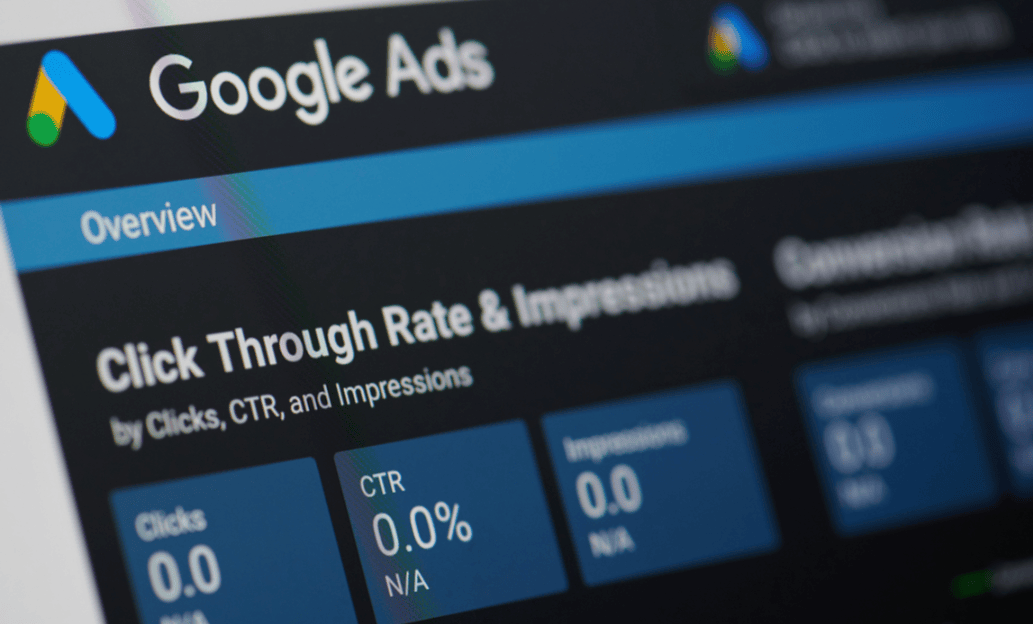You’ve done your research and launched your paid search campaign. You have all the data points in the world to measure its success. But if you don’t know what any of those metrics actually mean, you won’t be able to gauge whether your campaign is floundering or flourishing.
With so many paid search data points to sift through, it can seem like a nightmare trying to make sense of all the numbers. Fortunately, knowing which metrics matter most can help you easily understand your PPC campaign’s success rate — and give you insight on where you can improve.
Which Paid Search Metrics Matter MOST?
Wondering what the heck a ROAS is? CTR? Impressions?
There are a lot of terms you need to know to discuss paid search. Fortunately, once you know what these terms mean, it’s easy enough to understand which ones you need to pay attention to in order to analyze your campaign’s success.
1. Clicks
Let’s call this one the no-brainer.
The goal of any paid campaign, clicks are a pretty basic metric, but one that can help you go a long way to understanding the rest of your paid search data. Clicks simply refer to the number of interactions with your ads. With each click, a visitor descends upon your site, and with it comes another opportunity for your business to grow.
Other metrics are based on clicks, such as cost-per-click (CPC), and so knowing how many clicks your campaign has generated can give you context around other metrics.
Generally speaking, assuming all of your campaign settings are buttoned up and you’re targeting the right audience, more clicks means your campaign is performing better.
The Verdict on Clicks: Let’s face it: clicks are the reason you created a paid search campaign in the first place. After all, they represent potentially valuable visitors to your site, and that’s a very good thing, so let’s all take a moment to celebrate clicks!
2. Impressions
Sometimes abbreviated as “Impr,” impressions refer to how many times your ad was displayed to your assigned audience. While clicks are a fairly straightforward metric, impressions can be a little tricky since what exactly qualifies as an impression varies by platform.
For example, Google defines an impression as each time your ad is shown — in some cases, even partially — on either a search results page or other site within the Google Network, such as YouTube or Gmail. This differs fundamentally from how Meta calculates the metric, which is defined on Facebook Ads as the number of times your ad is on screen for the first time to a user.
Impressions matter to your PPC campaign because a higher number of impressions signals that your ad is being seen by a large volume of eyeballs. Whether or not those eyeballs belong to your ideal audience is a topic for another blog post, but generally, more impressions is a good thing. If your campaign’s impression count is low, many factors could be at play, including geographical influences on your audience size, seasonal demand for your product or service, or lower bidding amounts in comparison with competition.
The Verdict on Impressions: Take the time to understand how your chosen ad platform calculates an impression. This will provide you with a reliable baseline from which to determine whether or not your campaign is providing the desired amount of visibility, as well as adequately uncover potential techniques for performance improvement.
3. Click-through-Rate (CTR)
This is the vanity metric, so to speak. If clicks are the reason for creating a paid ad campaign, CTR is the reason logging into your account once in a while to optimize for performance.
Clickthrough rate is only understood in tandem with clicks and impressions. Specifically, CTR refers to the ratio of how many people clicked on your ad compared to how many people saw the ad.
Mathematically, it looks like this: CTR = clicks/impressions.
What’s tricky about CTR is that, what’s deemed acceptable or above-average depends on what you sell and in what type of field or vertical you sell your product or service, as well as where you ad is showing and being engaged by an audience. For example, an ad in the legal space can expect to fetch an average clickthrough rate of approximately 2.93% on Google’s Search Network but only 0.59% on the search engine giant’s Display Network, which uses significantly less reliable targeting options. By comparison, in the real estate vertical, both of these averages rise to 3.71% and 1.08%, respectively.
What’s not muddled, however, is the inherent benefits of a healthy clickthrough rate. No matter the vertical, Google uses CTR to assess the overall perceived relevance and attractiveness of your campaign’s ads in relation to that of your competitors. The metric reveals to Google that there’s something inherently better about your ads — better body copy, stronger call to action, bolder headlines — that makes them more likely to be engaged by users, and this means more money in the Google coffers.
But before you curse Google for being self-serving, keep in mind that, the higher the CTR, the more likely you’ll be rewarded for your efforts. Using historical campaign data, if Google deems that your ad, theoretically, will produce a healthier CTR, you’ll be allowed to bid less money than what your competitors are bidding for the same placement in search results.
The Verdict on CTR: CTR is vital to understanding the health of your campaign, and it’s a key signal to Google of perceived effectiveness. Just be aware that there is no single “best” CTR across the board. Research what rates are standard from your industry to better understand how your own campaign is performing.
4. Cost-per-Click (CPC)
The whole premise of paid search campaigns is that you pay for your audience’s attention via clicks. CPC is straightforward: it’s how much you pay for each click on your ad.
Simple in both definition and application, a quick glance to your CPC at any moment will give you at least a semi-clear idea of what your campaign is up against in terms of competition, and the metric can also be leveraged to root out potential red flags.
The higher your average cost per click, the more likely it is that a considerable amount of fellow advertisers are competing for the same prize as you, but remember that it’s all relative. What we mean is, if you’re a pickleball instructor, your CPC may hover around $3-4 to reflect the level of competition in your local market, but that pales in comparison to the insurance broker a few blocks away, who may be hemorrhaging upwards of $150-175 for each click in what tends to be the most cutthroat vertical around in the paid ad space.
Other times, your cost-per-click could be sounding a different type of alarm. If Google senses a mismatch between the keywords you select for your campaign, the copy of your ads, and how relevant your website is in connection to the search being performed by a user, the average price you pay for each click will follow suit, meaning you’ll have to pay, in some cases, considerably more than your competitors for the same click.
The Verdict on CPC: CPC is a metric vital to paid campaign success, and it’s invaluable as a tool to not only size up your competition — but keep your own performance in check.
5. SEARCH IMPRESSION SHARE (SIS)
Everyone loves having as large of a slice of the pie as possible, amirite?
Search impression share is that pie, only instead of more succulent cherries, juicy peaches, or those disgusting pecan things, the reward of a larger slice is more impressions for your ads — which results in more click opportunities.
Formulaically, SIS represents the number of impressions being generated by your campaign divided by the total number of eligible impressions, and it’s calculated on a percentage scale of 0-100. Every advertiser’s goal should be a sparkling SIS of 100%, but this isn’t dream world; that would mean that a campaign is maxing out every single opportunity, which is rare, indeed.
Back on Earth, the average search impression share is usually 60-80%, give or take. This means that the remaining 20-40% of available impression opportunities is being lost somewhere, and Google breaks that down to two areas: ad rank and budget. In other words, if your campaign is not producing a perfect SIS, it’s because either or both of the following are happening:
- Your ads are not ranking high enough in the pecking order
- Your daily ads budget is being exhausted early in the day
In either case, your competitors are stealing impressions away from your campaign, so SIS needs to be amongst the many valves you peer at every chance you get to judge performance.
If your campaign is wallowing in the depths of a low share of impressions, simply throwing more dollars Google’s way, oddly enough, can do the trick. Full disclaimer, though, this is only recommended if your campaign is manufacturing favorable results.
With rank being the issue, take a hard look at the manner in which you are bidding on your individual keywords. The auction system upon which a platform like Google Ads is based is constantly adjusting to fluctuating supply and demand, and so your bid for a keyword today may not cut the mustard tomorrow.
Adjust your bids accordingly, starting with your most successful keywords first, and then go from there.
The Verdict on SIS: Not necessarily critical, search impression share still screams not to be ignored, if for no other reason that it can give you a crystal-clear idea of what you’re leaving on the table — and how to get more of that pie.
6. Conversion Rate
Conversion rate refers to how often your ad — wait for it — conversions, um, converts!
Ask yourself: how often do my ads contribute to form submissions, phone calls, web chats, ecommerce sales, and the like?
As is the case with CTR, conversion rate is an excellent indication that your ads, and the experience they provide, are resonating with users. But there’s more to it than that.
Ads alone cannot claim the credit behind a high conversion rate; they certainly play a role, but they need the website to pitch in to entice the visitor to commit to action on your website after the click on your ad has occurred.
Higher rates of conversion are typically indicative of an unmistakable cohesion between your ads campaign and website, the two working perfectly in harmony to achieve the desired effect. Meanwhile, a lower rate of conversion is a complete mixed bag, where any combo of factors could be at fault, from poor keyword selection and incorrect audience targeting to bland ad copy and unclear website messaging.
The Verdict on CR: High rates of conversion typically equal happy advertisers and populated sales funnels. Low rates could take some time to dissect and/or require the help from seasoned professionals [wink, wink].
7. Cost-per-Conversion
So, that conversion rate of yours is high, but what are you shelling out for each of those golden leads?
Whatever the answer, it’s best to wrap it in some context to determine if that number is acceptable or not.
For example, let’s assume you sell bottles of water at $5 a pop, and you spend $1,000 in click cost to get 100 sales. Your cost-per-conversion is $10, which in the grand scheme of things seems ideal, but ultimately, you spent twice ($1,000) as much as you made ($500). In your case, that average conversion cost is crap. Why bother advertising to lose cash?
However, if you are selling $30 shirts, that same average cost of a conversion now means you are generating $20 in revenue with each sale.
The lower your cost-per-conversion, the greater your return-on-investment (ROI).
The Verdict on Cost-Per-Conversion: The lower this metric, the better! Don’t look at conversions for the sake of celebrating conversions within your campaign; make sure the numbers add up to financial sense for your business.
8. Return-on-Investment (ROI) and Return-on-Ad-Spend (ROAS)
At the end of the day, your business needs to make money to stay afloat. And while it takes money to make money, you need to be making more money than you are spending on ads. That’s where ROI and ROAS enter the conversation.
These metrics help you determine the profitability of your campaign. While similar, ROI and ROAS are not quite the same.
In paid search, ROI is typically calculated using the following formula: net income/cost of investment x 100. ROAS, by comparison, divides the revenue attributed to a specific paid ads campaign by the costs of that campaign.
At the end of the day, these two numbers, in particular ROAS, are where your campaigns sink or swim. All other metrics can appear rosy, but if the bottom line is being negatively impacted, it’s time to make some campaign changes or get out entirely.
The Verdict on ROI & ROAS: This is the stuff the decision-makers want to see. As such, any discussion surrounding campaign viability begins and ends here.
How Do You Measure The Success Of A Paid Search Campaign?
The answer to this question varies widely depending on your goals, and it’s not always an easy one to decipher. What do you ultimately want to happen after you launch your campaign?
Ask yourself:
- Is the primary goal to increase revenue and generate profit — or something slightly less tangible, like brand awareness?
- How will success be measured? Sales? Phone calls, forms, or something else?
- What is the true value of a conversion?
- How many conversions, or ROAS figure, must be produced to assure campaign feasibility?
There is no right or wrong answer to these questions. However, the answers to these questions will help you better understand if your campaign is a success or not.
Final Thoughts
Once you know which paid search metrics pertain most to your unique situation, you can more easily decipher whether or not your campaign efforts are sustainable or in vein.
If your campaigns aren’t hitting their goals and you aren’t sure why, that’s where we can help. With years of experience running successful paid search campaigns, we know exactly where to identify problems areas in a campaign and how to improve them. If you want a second opinion on your campaigns, contact Digital Strike today to get expert feedback on your paid search strategy.








